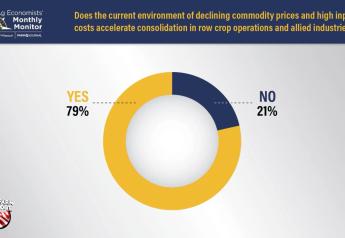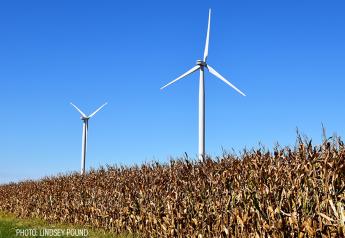When College Is The Only Option, Low Unemployment Hurts Farm Country
While the U.S. experiences a record low unemployment rate, labor pains intensify for rural America.
“Our economy is incredibly strong. We haven't seen unemployment rates this low in decades,” Labor Secretary Alexander Acosta told U.S. Farm Report Host Tyne Morgan. “What's incredible [is that] under President Trump [we are seeing] the lowest unemployment rate for adult men, for adult women, for Hispanics, African-Americans and Asians.”
According to Acosta, for the first time in U.S. history there are more open jobs than individuals looking for jobs. While this might seem like a statistic rural America should celebrate, it also points to Farm Country’s greatest pain point: access to skilled labor.
Today farmers throughout the country are paying more for labor than they ever have before and still have a hard time filling jobs.
Colorado dairy producer Ray DeVries says his milking staff starts at $13 per hour for an eight-hour shift.
“A rise in living expenses as well as fast economic growth has created a huge worker shortage,” he says. “Dairies often compete with the construction industry.”
Maine producer Jenni Tilton-Flood says she starts her milking staff at $11 per hour, and after a trial period they receive health insurance, an HSA, paid vacation and sick time in addition to housing. For Wisconsin producer Kristin Solum, the solution hasn’t been limited to increasing wages. She has become creative with shift lengths as well.
“We have found that 12-hour shifts don’t work for us even if [employees] say that’s what they want,” she says. “They work five eight-hour shifts and one [12-hour shift] per week so everyone can get a day off.”
The issue is broader than just the dairy industry though. Skilled labor is needed to plant and harvest crops, milk cows, manage livestock, build homes, build infrastructure and more throughout the U.S.
“We are desperate to have good skilled farm laborers in America,” says Zippy Duval, president of the American Farm Bureau Federation. “It is one of the biggest restraints that we have in American agriculture. We have to find a solution.”
A negative attitude toward trade occupations over the past 20 years has meant a decline in the number of Americans who possess necessary skills to fill rural jobs. That’s something Acosta and the Trump administration hope to fix.
“You know it's so important to respect everyone and respect everyone's job preferences and so some individuals may want to go to college and they might want to become a physician. Others may want to say, ‘I want to be a carpenter or a welder’ and our schools need to focus on everyone and provide opportunity to everyone,” Acosta said. “I worry sometimes that our schools are a little elitist that they say our job is to send everyone to college, rather than to get everyone a family sustaining job and that needs to change.”
According to Acosta, there are 6.7 million open jobs in the U.S. and a lot of them are trade-type positions. He says many young Americans don’t realize how much skilled jobs pay.
“If you look at the wage increases, the wage increases are highest in goods producing industries, people that make stuff. Are we providing the skills that Americans need to learn to make stuff? To learn how to weld, you know for example,” he said. “Those jobs are out there we need people to fill them.”
For this reason, President Trump launched an apprenticeship program where people can become an apprentice to learn a trade.
“If you look at the data apprentices actually make more money in crafts than college graduates do, and a lot of folks don't hear that data,” Acosta said. “We need to empower young Americans with this information, so they can choose what they want to do.”







